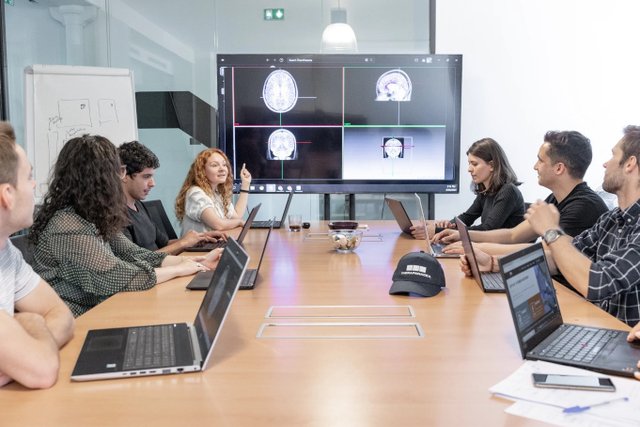AI Engineer Intern
The position
Job description
As an intern, you join the core DL team and contribute at one or both layers of our training stack:
Pretraining — learn generalizable representations on large, de‑identified datasets.
Fine‑tuning — adapt those representations (and VLMs) to clinical tasks and ship improvements.
Work is prioritized by expected product and clinical impact; research is a means to that end.
Where you’ll contribute
Pretraining (images ± text)
Design and scale representation learning for 2D/3D medical imaging:
Objectives: masked image modeling, self‑distillation/contrastive (MAE/DINO‑style), vision–language alignment (CLIP‑style with radiology reports).
Modalities/architectures: X‑ray, CT, occasional MRI; 2D/3D ViTs and UNet‑style decoders.
Systems: high‑throughput DICOM loaders, strong augmentations, mixed‑precision, distributed training.
Evaluation: transfer to target tasks, label‑efficiency curves, robustness across sites/vendors.
Fine‑tuning (product models & VLMs)
Adapt and optimize models that power our products and workflows:
Core tasks: detection/segmentation/registration; follow‑up (temporal matching, lesion tracking, measurements); calibration & uncertainty.
VLMs: image encoder → decoder LLM for report generation/summarization/structured extraction. Techniques include supervised fine‑tuning on paired image–report data, instruction tuning, alignment of visual tokens (e.g., resamplers/Q‑Former‑style adapters), and LoRA/PEFT on both vision and language components.
Efficiency & deployment: distillation, pruning/quantization, KV‑cache and batching for throughput; ONNX/TensorRT inference.
Evaluation: AUROC/FROC/Dice, ECE calibration; for VLMs—finding‑level label agreement, RadGraph‑style entity/relational metrics, factuality checks vs imaging labels; clinician review.
You’ll spend time where it moves metrics most. Some interns focus on pretraining, others on fine‑tuning/VLMs; many touch both.
How we work (engineering standards)
Reproducibility: Hydra configs, seeded runs, model registry; tracked experiments.
Production‑ready code: typed Python, tests on data/metrics, documented PRs, code review.
Measured progress: clear win criteria on accuracy, generalization, latency, and memory.
Our stack
PyTorch (Lightning), MONAI, timm/Hugging Face; NumPy/scikit‑image; DICOM tooling; W&ClearML/DVC; multi‑GPU training; ONNX/TensorRT for inference; containerized services.
Preferred experience
Strong ML fundamentals (probability, linear algebra, optimization).
Proficient Python + PyTorch; experience training/debugging deep nets.
Familiarity with self‑supervised learning and/or vision‑language models.
Clear communication and disciplined experimentation.
Strong drive towards improving healthcare worldwide
Nice to have: medical imaging (X‑ray/CT/MRI), 3D vision, detection/segmentation/registration, domain adaptation/uncertainty, CUDA/performance work, meaningful OSS or papers.
Want to know more?

Rencontrez Gabriel, Head Of AI

Rencontrez Alexis, CTO
These job openings might interest you!
These companies are also recruiting for the position of “Données/Business Intelligence”.
Machine learning - End of studies internship - Paris
StocklyInternshipParisNo remote workSalary: < €2.5K a monthSoftware, E-commerce87 employeesMachine Learning Ops Intern (x/f/m)
DoctolibInternshipParisA few days at homeMobile Apps, Software2,800 employees3A Product Internship - IA for Data Management and Interoperability
MurexInternshipParisNo remote workBanking, Software3,400 employeesMedical Data manager intern
TheraPanaceaInternshipParisOccasional remoteSoftware, Artificial Intelligence / Machine Learning80 employeesData Operations Engineer Intern (M/F/X) - Paris
CrossbeamInternshipParisNo remote workSoftware, SaaS / Cloud Services128 employeesAmerican Football Data Analyst Intern (6 months)
SkillCornerInternshipParis, LondonFully-remoteSoftware, Artificial Intelligence / Machine Learning100 employees














